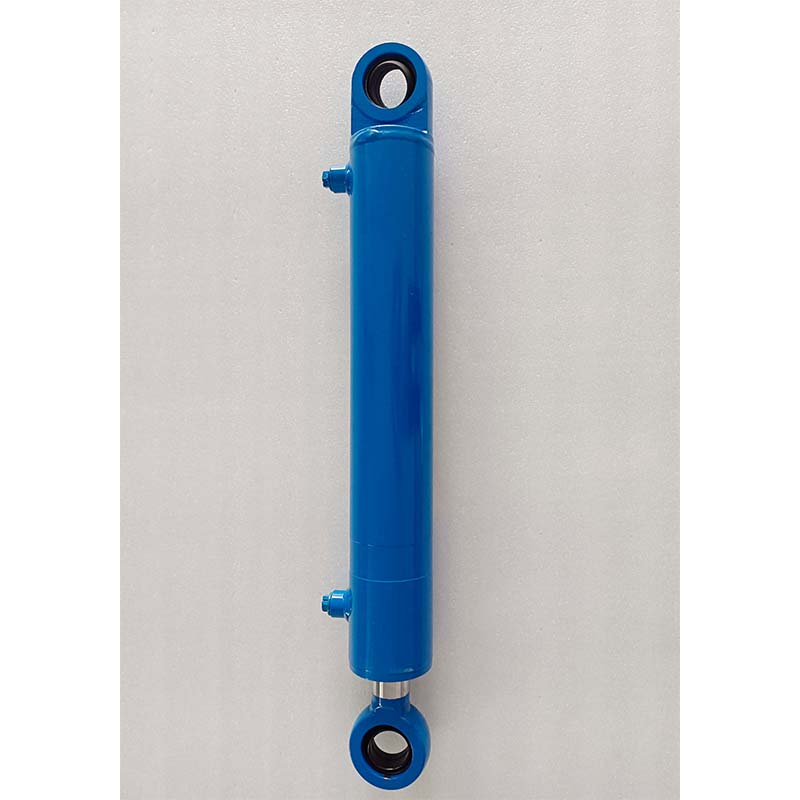నవం . 24, 2024 13:29 Back to list
Seals for Hydraulic Cylinder Applications and Their Importance in Performance
Seals in Hydraulic Cylinder Products Essential Components for Performance and Reliability
In the world of hydraulic systems, seals play a crucial role in maintaining functionality and ensuring the overall efficiency of hydraulic cylinder products. Hydraulic cylinders, as essential components in various machinery, convert hydraulic pressure into mechanical force, operating a vast array of applications from construction to manufacturing. The effectiveness of these cylinders, however, heavily relies on the integrity and quality of their seals.
Understanding Hydraulic Cylinder Seals
Seals are mechanical components designed to prevent the escape of fluid and to protect against external contaminants. In hydraulic cylinders, they are vital for maintaining pressure, ensuring smooth operation, and extending the life of the equipment. The primary types of seals used in hydraulic cylinders include piston seals, rod seals, and buffer seals. Each type serves a distinct purpose
1. Piston Seals These are responsible for preventing fluid leakage from the cylinder and maintaining pressure as the piston moves up and down. A well-designed piston seal ensures minimal friction while providing a tight seal, enhancing the cylinder’s efficiency.
2. Rod Seals Located at the exit point of the cylinder rod, these seals keep hydraulic fluid from leaking out and prevent contaminants from entering the cylinder. Rod seals must withstand wear, as they experience abrasion from the rod’s movement.
3. Buffer Seals Buffer seals act as a secondary defense, protecting the primary seals from excessive pressure spikes and impacts. They help to absorb shocks, thereby prolonging the life of the primary sealing elements.
Materials Used for Seals
The choice of materials for hydraulic seals is critical. It influences factors such as durability, resistance to wear, and compatibility with various hydraulic fluids. Common materials used include
- Nitrile Rubber (NBR) Known for its resistance to oil and heat, NBR is widely used in applications where standard hydraulic fluids are involved.
- Fluorocarbon (FKM or Viton) This material is highly resistant to aggressive chemicals and extreme temperatures, making it suitable for harsh environments
.- Polyurethane (PU) Its excellent abrasion resistance and elasticity make polyurethane a popular choice for both piston and rod seals.
- PTFE (Teflon) Offers low friction characteristics and is highly resistant to chemical substances, making it suitable for seals that require minimal wear.
seals in hydraulic cylinder products

Factors Affecting Seal Performance
Several factors can influence the performance and lifespan of seals in hydraulic cylinders
1. Pressure Range Seals are designed to handle specific pressure ranges. Exceeding these limits can lead to premature failure.
2. Temperature Variations High or low temperatures can affect seal material properties, leading to material degradation or failure.
3. Fluid Compatibility Not all seals are compatible with every type of hydraulic fluid. Using the wrong seal material can result in chemical breakdown.
4. System Design The overall design of the hydraulic system, including the alignment of components and installation techniques, significantly affects seal performance.
Importance of Maintenance
Proper maintenance of hydraulic systems is essential for prolonging the life of seals and overall equipment reliability. Regular inspections should include
- Checking for signs of wear or damage on seals. - Monitoring for leaks in hydraulic systems. - Ensuring that fluid levels and conditions are within acceptable limits.
Implementing a proactive maintenance schedule can help in identifying potential issues before they escalate, thereby saving time and costs associated with repairs and downtime.
Conclusion
In conclusion, seals in hydraulic cylinder products are more than just accessories; they are essential components that significantly influence the performance, safety, and reliability of hydraulic systems. Understanding the various types of seals, their materials, and the factors affecting their performance can help manufacturers and operators enhance the efficiency of their hydraulic applications. With proper selection, installation, and maintenance, the life of hydraulic cylinders can be greatly extended, ensuring operational excellence in various industrial applications. As technology progresses, the continued development of advanced sealing materials and designs will likely lead to even greater improvements in hydraulic system reliability and performance.
-
1.5 Ton Lifting Cylinder 70/82-40-290-535 | Precision Engineering&Industrial Applications
NewsJul.21,2025
-
1.5 Ton Lifting Cylinder 70/82-40-290-535-Hebei Shenghan|Hydraulic Solution, Industrial Applications
NewsJul.21,2025
-
1.5 Ton Lifting Cylinder-Hebei Shenghan Hydraulic Machinery Co., Ltd.|High-Load Capacity&Industrial Hydraulic Solution
NewsJul.21,2025
-
1.5 Ton Lifting Cylinder-Hebei Shenghan Hydraulic Machinery Co., Ltd.|High-Load Capacity&Industrial Hydraulic Solution
NewsJul.21,2025
-
1.5 Ton Lifting Cylinder-Hebei Shenghan Hydraulic Machinery Co., Ltd.|High-Load Capacity&Industrial Hydraulic Solution
NewsJul.21,2025
-
1.5 Ton Lifting Cylinder 70/82-40-290-535 - Hebei Shenghan Hydraulic Machinery Co., Ltd. | High Performance, Durable, Industrial Use
NewsJul.21,2025
